

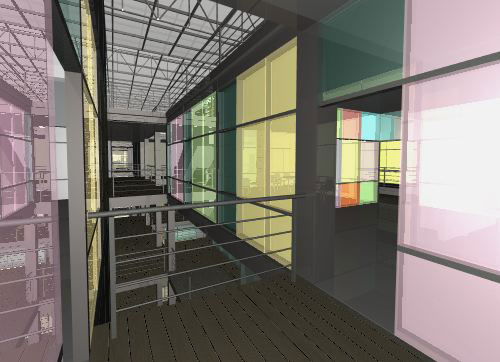

At the centre of Thessaloniki, next to the passage Modiano, there is the building of the New Market Modiano, that until yesterday was the roof of the wholesale meat market of the city.
Due to the singular location of the building in the commercial and the historic centre of Thessaloniki, there is a brute for its development. Its’ function is unique for the market bandwidth of the city, and the operate shops don’t fill the common needs.
More, the building’s feature is spoilt by the uses of refreshment that have predominate, and the condition of the building’ s maintenance, which thrusts itself forward the historic centre, is uninviting.
The project plans the contribution to locality’s revival throught the retension, the upgration and the resonance of the market’s commercial feature.
The intention is, on the one hand, to preserve the original funcion, by expanding the market in height, and on the other, to outpull the public turn–out by adding space’s of recreation.
The typology of the building is not changing and the shop’s arrangement remain the same, while the roof is moving upwards with reference to extend the market.
The function grid of the ground floor is reproduced on the upper storeys and it is subsumed with a variable grid, that allows the user to create the space according to his will.
The site fronts two different buildings. The one on the road Ermou is a neoclassic and the other, on the Vasileos Irakliou, is an apartment building.
At the side of Ermou, the new construction is standing behind the neoclassic, and at Vasileos Irakliou it makes a border to the buildings facet and the street’s forehead.
The shape of the new building is not directly obvious in the view from the street’s level, while the project’s case was to set off the preexistents ones. The visitor, that is gravitated to the passage, finds out the new space from the inerior .
Supervisor: Colonas Vassilios
Reference Number: 152


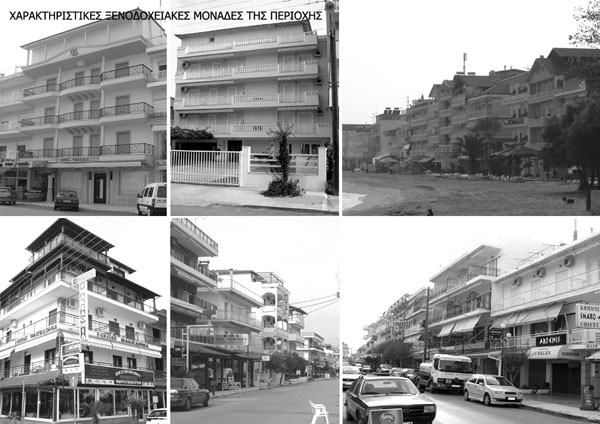

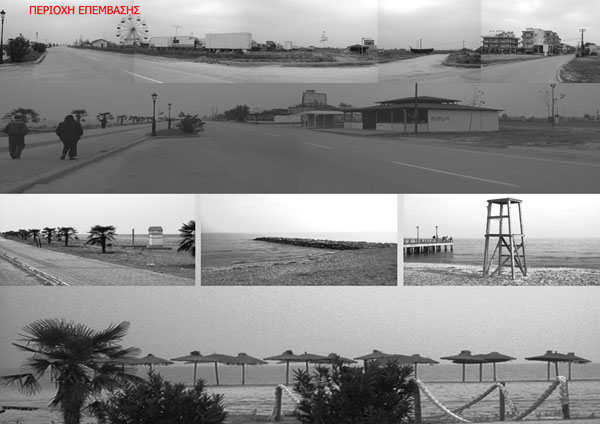

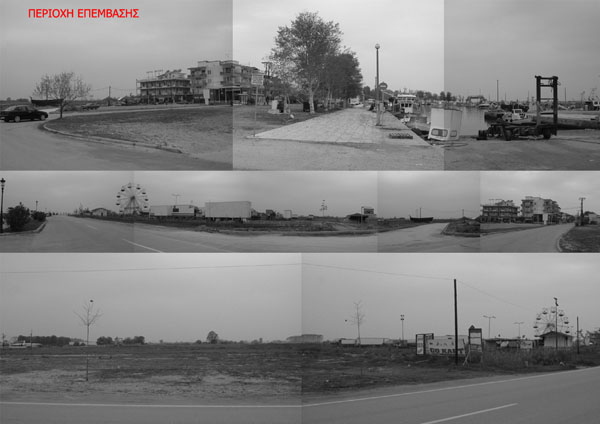





The uniformity of the buildings in the area is strong, regardless of their use. However, most of them are used as hotels, resulting in the liveliness of the community due to the influx of tourists (foreign and local); especially during summer season.
The phenomenon of the monotonous repetition of the masses of the buildings, exterior form and usage, is becoming more obvious in the centre of the municipality, where most of these buildings are situated. This way, zones are created with intense density and facades which their main characteristic is the rigidness of masses.
The fact of the matter is, that efforts have been made in order to make the area look better and modernize it in a town planning level, as well as, in the use of new construction materials and methods.
Therefore, this project is designed in such a way that new construction methods; the right choice and usage of materials as well as the usage of the space available, are not interfering, but in fact taking in consideration this general need for development and evolution process of the municipality.
Supervisor: Kanarelis Theoklis
Reference Number: 123


The particular study is focused in the planning of an underground residence in existing plot in Epanomi of Thessalonici in altitude hundred metres from the level of sea. The study is developed in four sectors: synthetic course, bioclimatic planning, building details, rendering depiction. The building was drawn with the base of organic forms adapted and reconciled with natural curvatures of the ground.
The application of bioclimatic architecture was necessary in the extensive study of natural parameters that coexisted with the classic needs of conventional building models that except the others, to create an ecological building according to the specifications that imposes the bioclimatic planning.
The realistic approach of the subject, prompted the present study to the recording and to the planning of building details that concerns in the manufacture of experts internal and exterior systems as the central glass cone in the roof of residence, the ventilators, the central electronic gate of entrance for the vehicles, the glass parapets that are developed so much in the interior of residence in the abroad, the glass bricks in the door of entry of residence and the stairwells.
The rendering depiction of residence constitutes one from the more important stages of work while in this way is the visible all essential information that lends the identity of building. The internal pictures portray the organisation of all spaces separately while the nightly aspects present the residence with internal lighting in combination the plasticity of ground that encompasses it.
Finally, the 2dimensioned drawings (ground plans, aspects, sections) make obvious the synthetic intention in combination the ground, at that they are always approached in connection with the linear depiction of building with the quadrant in the ground plans and with the coloration in the sections.
Supervisor: Philippitzis Dimitris
Reference Number: 141
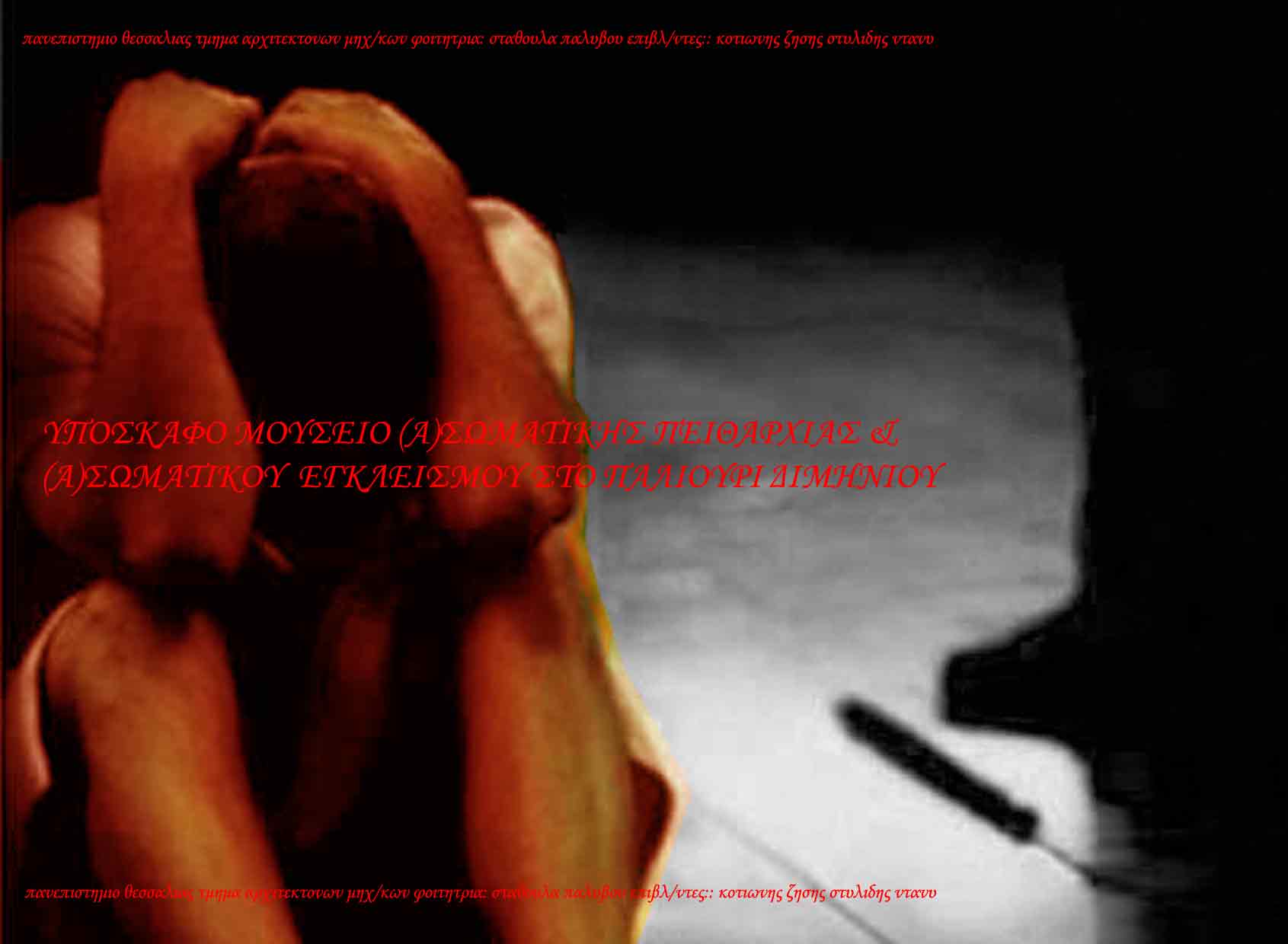

Marquis De Sade’s scripts are full of some kind of incarceration rooms, be it small or large in proportions. The lead roles of his writings at some point they are locked in a cell either as a victim or as the victimizer.
Some of the principles of true incarceration are revealed in Sade’s stories and at the same time exist in true prison institutions such as discipline, unceasing vigilance/surveillance, constraint, compliance and submission to all set of rules, subjugation, enforcement and many more.
The underground Museum in Paliouri Diminiou of a) physical discipline and b) body incarceration incorporates some of the principles of prison and through the vast stretch, extension, and perplexity of the site it states the meaning of a body under constraint, submission and compliance to a strict set of rules. It is an underground structure with many rooms, that sometimes communicate with each other and sometimes they lead to a complex maze like corridors, yet at the same time it gives a suffocating feeling.
The prison ( be it in a fictional script or a true institution) is a place where the prisoners have no rights and are under surveillance. Through the enforcement of rules in conjunction to the above statement, and especially inside the museum we pick up conceptual dipoles such as imprisonment – freedom, insanity – reason, victim – victimizer, overseer – under surveillance. As a consequence of the above society acquires different bipolar identities, healthy-ill, underground-above the ground, viable- non viable, normal-abnormal.
Sade’s illustrations are comprised of sexual and territorial descriptions. However both these two categories converge to a common point. These are conveyed through territorial labels and maneuvers. The body (there is no sex discrimination) acquires a territorial dimension and the space is strictly build to imprison. The space of Sade, prisons and the museum are characterized by room/ territorial surveillance, and mirroring of the human expression.
The organ like contour and the pattern of the structure are defined by the figure of the bodies. The figure of the building is made up of a female body with a male body inside it, sharing only the gastrointestinal area. Through this dual quality of the same body the space attains female and a male characteristics. As female characteristics of the space we can attribute spaciousness, snugness, warmth, and passivity while the male characteristics are incommodity, activism, energy and non hospitality.
This structure has another special characteristic – the fluid, as moisture and humidity are associated with sexuality and sexual instincts. The human body itself is made up of enormous amounts of liquids, different organs, and multiple functions tightly linked together. The optional lighting/illumination of the different rooms of the museum is giving a stronger sense of imprisonment and interiority.
There is a tight link between surveillance-discipline and enforcement a fact that is reflected on the body, so it acts accordingly. The end result of an imprisonment is a new body but its not our task to characterize this new body as better or worse. This new body has the marks of discipline carved on it, remnants of the space of its previous incarceration-creation.
Supervisors: Kotionis Zissis, Stylidis Iordanis
Reference Number: 112


